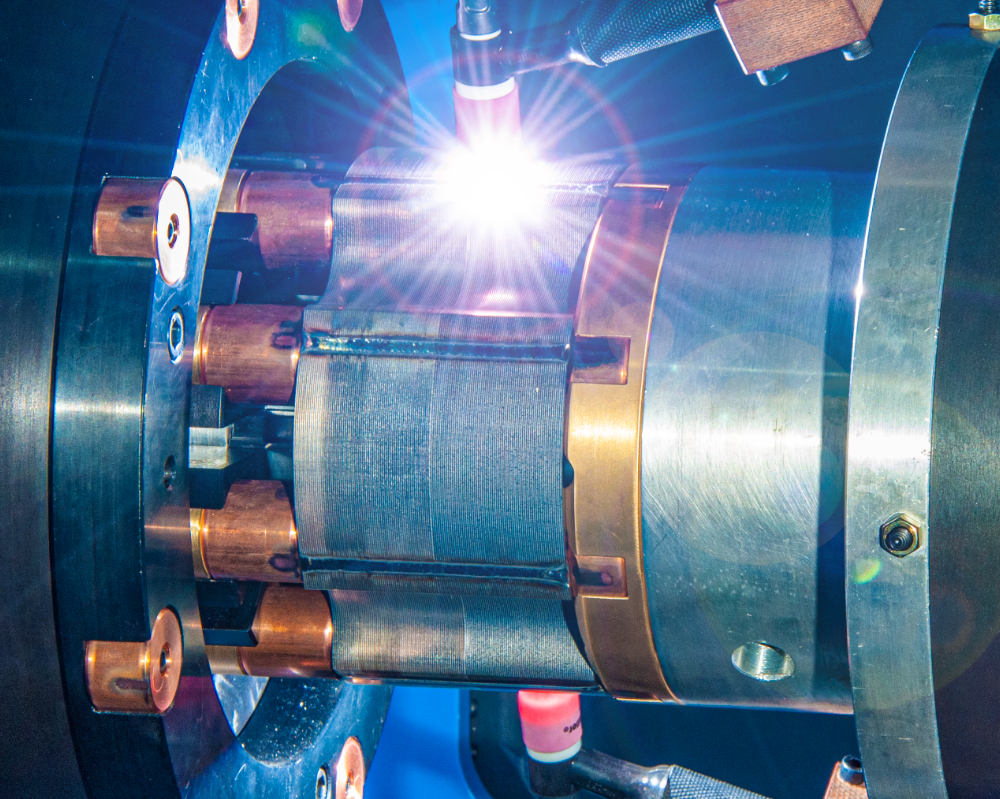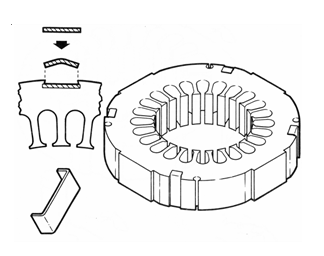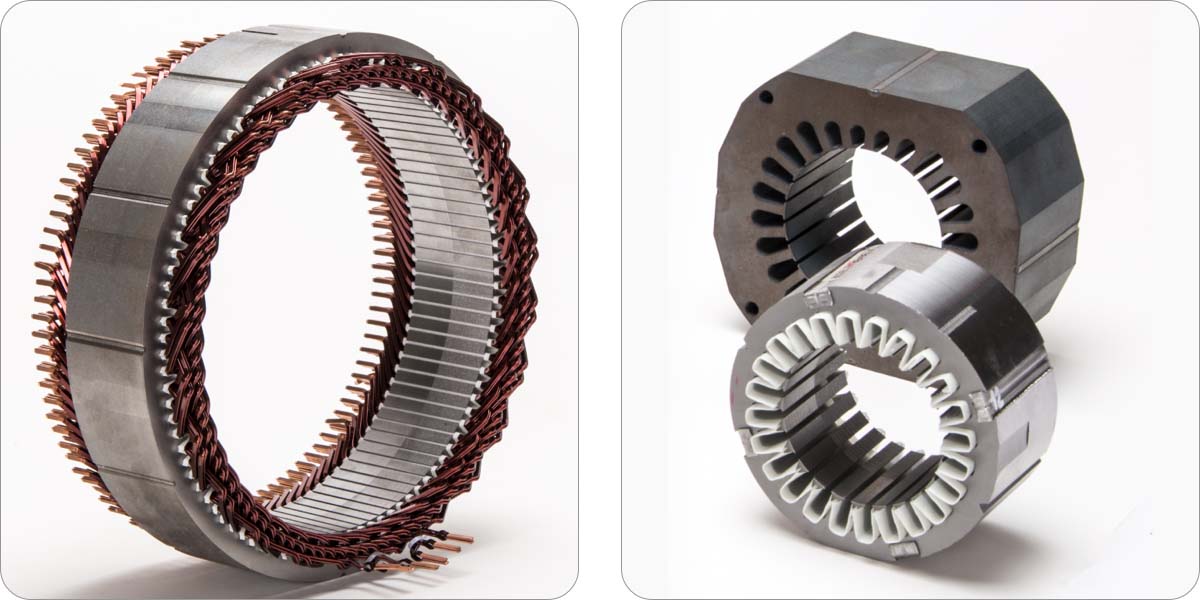In the ever-evolving world of electric motor manufacturing, technological advancements and process optimizations have become essential for staying competitive. Over the past 40 years, the stator assembly process has seen significant improvements, driven by the need for higher quality, lower costs, and increased efficiency.
At Alliance Winding Equipment, we specialize in modernizing stator manufacturing. We ensure manufacturers meet today’s high-performance demands while minimizing labor and production costs.
Critical Advancements in Stator Manufacturing
Stator Core Assembly Innovations
The stator core is the backbone of an electric motor, and its assembly has evolved to offer greater efficiency and reliability. Manufacturers have several processing options, including:
- Lamination Selection: While automated stacking systems exist, manual selection remains widely used due to its flexibility in handling inconsistencies in lamination quality. There are challenges with the separation of laminations after the stamping and annealing process that can cause difficulties with automation.
- Welding: Welding is widely used and accepted to secure stator cores but requires maintenance, including torch tip adjustment, argon monitoring, and torch rod sharpening. Motor designers are also concerned about the stator core losses that may occur by welding across the laminations.

- Cleating: An alternative to welding, Cleating offers a cost-effective and flexible alternative with minimal impact on electrical properties. The process “V” rolls and flattens the strip of soft steel down a dovetail slot on the stator stack's O.D.

- Lamination Interlocking: During the lamination punching process, dimples are automatically placed
in each lamination as they are stamped and collected at the end of the die. This allows for lamination stacks to be interlocked and provides manufacturers with a cost reduction by eliminating a core securing machine and operator(s). Considerations with this process include a more complex die and potential warpage of the core during annealing. - Loose Laminations: Stator stacks 6in (152mm) and below are popular for processing loose laminations. Stator cores are picked by an operator or automatic core build system and placed directly into the Slot Insulator without securing the stack. This eliminates core securing equipment but creates other considerations during manufacturing, such as core straightness, clamping requirements, and the potential for O.D. resin placement to secure the stator core.

Stator Insulation Methods
Proper insulation is critical for motor performance. The two primary methods include:
- Epoxy Coating: Although historically limited by heat capacity, newer formulations now withstand temperatures exceeding 150ºC.
- Slot Liners: The most commonly used insulation method, utilizing polyester films for costeffectiveness and adaptability to higher temperature ratings.
Advancements in Coil Winding & Insertion
For over 40 years, coil winding and insertion have dominated the electric motor industry. However, recent innovations have significantly improved automation, efficiency, and machine utilization.
- Shed-Type Coil Winders: These wind coils quickly and efficiently, with servo motor-driven systems achieving faster cycle times than traditional variable frequency drives.
- Automated Coil Insertion: Advanced tooling allows simultaneous coil insertion, reducing cycle times and improving slot fill percentages for higher efficiency motors.
- Integrated Wind/Insert Machines: By combining these processes, manufacturers reduce labor costs and improve product consistency.
Forming & Lacing for Durability
To enhance motor longevity and stability, end-turn forming and lacing techniques ensure that wire bundles
remain compact and secure.
- End-Turn Forming Machines: Compress wire bundles for better resin impregnation, improving motor efficiency.
- Automated Lacing Machines: Replace manual stitching, ensuring precise cord tension and better structural integrity.
Stator Resin Impregnation for Enhanced Performance
Resin bonding is a crucial step to reinforce stator wire windings. Traditional dip and spin methods are being
replaced by trickle resin systems, which offer:
- Higher resin slot fill for better insulation
- Reduced emissions and waste
- Improved consistency in final motor performance
Automation in Stator Pressing & Assembly
With increased demand for lightweight, high-efficiency motors, manufacturers are adopting advanced pressing techniques to secure stators in lighter steel shells. Automation in this process enhances alignment accuracy and production speeds, setting the stage for future developments in electric motor assembly.
The Future of Motor Manufacturing
As the industry moves towards greater automation, energy efficiency, and precision, Alliance Winding Equipment continues to lead the way in stator assembly innovations. Our cutting-edge solutions help manufacturers meet the growing demands of modern electric motors, ensuring quality, flexibility, and cost savings.
Want to optimize your stator production? Contact us to learn more about our state-of-the-art motor manufacturing solutions.



